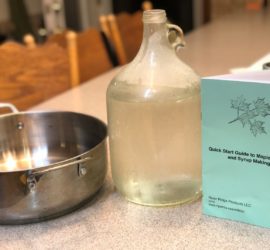PFOS – Perfluorooctane Sulfonate & C8
PFOS is perfluorooctane sulfonate, which is a fluorinated aliphatic compound that is highly stable, widely used in commercial goods, and harmful to the environment. This is a controversial chemical of concern because it directly poses wildlife and human health risk. Another major issue about PFOS is that it does not degrade in a reasonable time. In fact, this causes it to build-up in the environment. PFOS maintains an eight-carbon molecular structure, which is similar to other perfluoroalkyl and polyfluoroalkyl substances, such as PFOA. Furthermore, as a result of its mobility and bioaccumulation processes, perfluorooctane sulfonate is now observable in soil, groundwater, and live bodies around the world. Updated March 26, 2021.

Other Chemical Names
C8 refers to the 8-unit carbon chain compounds of the PFAS family, which are perfluoroalkyl and polyfluoroalkyl. And PFOS is part of the fluorinated aliphatic substance that is PFAS. The other part of PFAS is PFOA, which has served a similar industrial purpose as PFOS.
PFOS Chemical Properties & Perfluorooctane Sulfonate Molecular Formula
The perfluoroalkyl and polyfluoroalkyl substance, PFOS, has a chemical formula C8HF17O3S, and identifies as Chemical Abstracts Service Number (CAS) 1763-23-1. The substance typically exists as a white powder (a solid potassium salt). Unlike PFOA, PFOS has a boiling point of 133 degrees Celcius and a molecular weight of 500 grams per mol. Perfluorooctane sulfonate is also water-soluble at a concentration of 680 milligrams per liter, at a temperature of 25 degrees Celcius.
Uses of Perfluorooctane Sulfonate
The uses and applications of PFOS are similar to PFOA. In fact, the two chemicals of concern historically apply to replace one another in the manufacturing of industrial products and household goods. For example, C8 applies to most water-resistant materials, as well as non-stick pots and pans. It’s also likely to be present in various textiles, fire extinguishers, and furniture.
Pollution and Contamination
The previous 50 years of industry in the United States comprises massive PFOS production and usage. And although government regulations for this substance are just recently in place, the industry reflects by limiting production. Nonetheless, detections of the chemical still exist in soil, water, and air samples from across the globe. The substance is also detectable in the blood of most bodies (people and animals). This C8 substance poses a serious concern because of its biopersistent quality. In other words, it does not break down easily in the environment and is not metabolize in the body within the average human lifespan.
C8 Pollution in Soil & Groundwater
Per the existing records and legal publications, the release of PFOS waste products into the environment is mostly rivers, landfills, and the atmosphere above them. Naturally, the chemical will contaminate the shallow soil first and then leach further into the subsurface. This process results in C8 soil contamination as well as groundwater pollution. Furthermore, this type of PFOS contamination can be a problem when the C8 plume interferes with the drawn-down of a municipal water supply. As a result, drinking water contamination occurs.
Human Health Risks
Scientists are just beginning to understand the health risks and environmental impact of perfluorooctanoic acid exposure. At the moment, the general consensus is that exposure at toxic levels may result in a variety of diseases, such as cancer and colitis, as well as thyroid, pregnancy and reproductive problems. However, continuous observation over the next century will be a requirement to fully understand the exposure ramifications.
PFOS Testing
Scientists are able to perform C8 testing procedures, to determine levels of PFOS in the environment. In fact, environmental professionals can test for PFOS, as well as PFOA within blood, soil, groundwater, drinking water, and rainwater.

